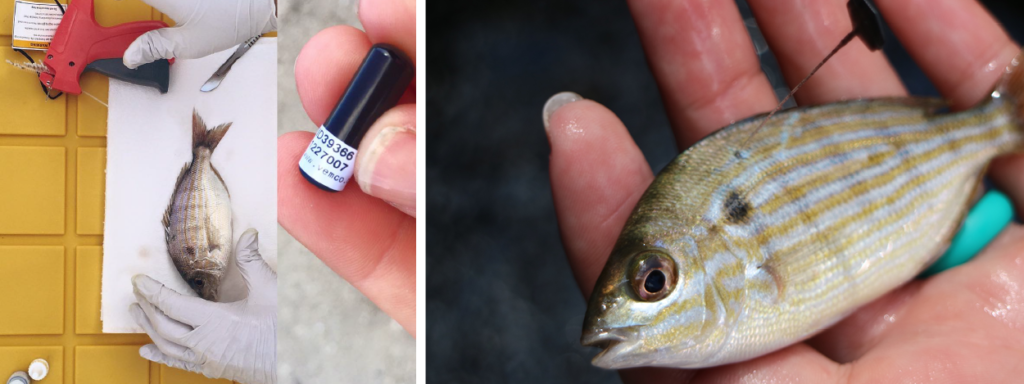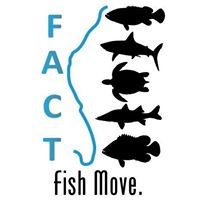
Project Overview
While breeding locations of juvenile pinfish and adults within the estuary are known, the homing instinct of adults returning from spawning has never been studied. Homing instinct is important as it relates to genetic diversity, ecosystem health, and population management. Late each fall, usually just after the first cold front, adult pinfish gather in inlets before migrating offshore to spawn. Pinfish are batch spawners and remain offshore for several months before returning to the estuaries. The exact duration of spawning and where they return after spawning is unknown. This project stocked tagged pinfish in a restored seagrass site to track pinfish movement patterns and site fidelity (the tendency to return to a previously occupied location) after spawning.
Why this matters
“To my knowledge, this is the first time anyone has tried to track bait fish,” said Dr. Nicole Kirchhoff, project Principal Investigator. Pinfish represent an important keystone species to estuaries, in particular seagrass communities. Gaining a greater understanding of their life history will help scientists understand how pinfish help with seagrass restoration efforts and supports the economic sustainability and conservation of our marine ecosystems.
Lead Organizations
Partners
- Jerry Pope at J&J Wholesale
- Florida Fish and Wildlife Fisheries Independent Monitoring
Supported by
Project Status
- Complete
